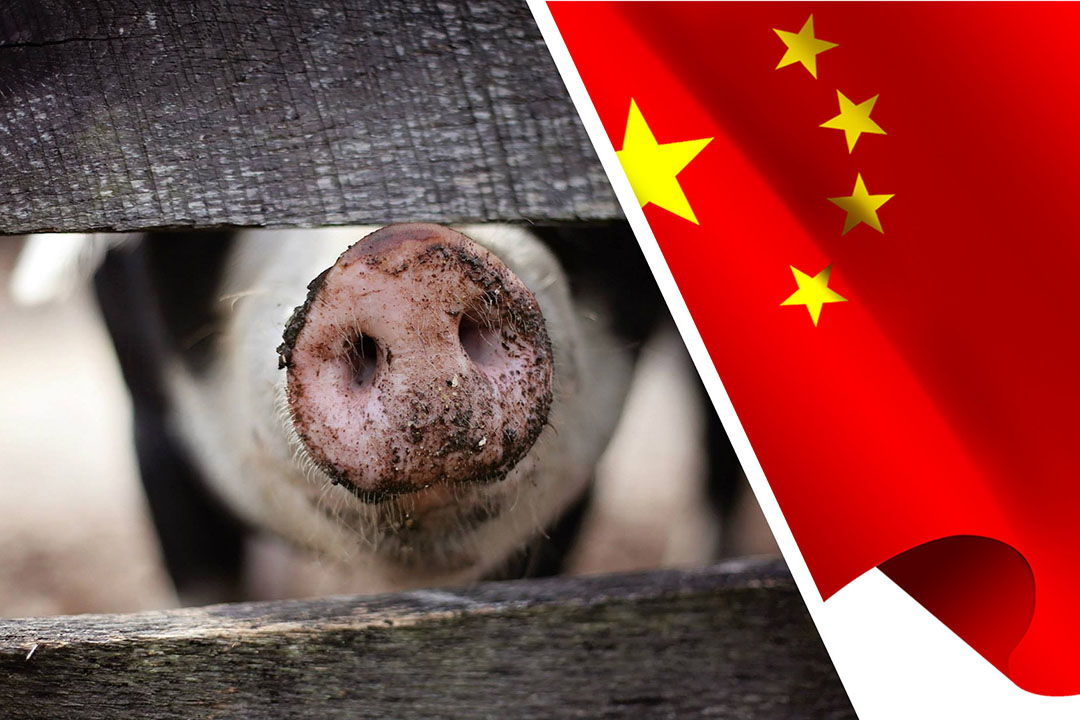China gearing-up to meet increase in demand for feed

The Chinese government has announced several grain policy changes to meet increasing feed demand, which is expected to recover to the 2017/18 level at around 212.7 million t. The hog feed loss due to African Swine Fever (ASF) is offset by strong poultry and ruminant expansion along with a swine and poultry restocking boom following the Covid-19 pandemic.
Recovering from ASF and Covid-19
In March 2020, the Chinese Ministry of Agriculture and Rural Affairs (MARA) stated that the threat from ASF has been greatly reduced. Pig farms nationwide are enthusiastic about restocking and pig breeding farms are wasting no time in building new projects and scrambling for piglets and sows.
In the Chinese poultry sector, it is estimated that the Covid-19 outbreak lowered broiler slaughter by 9% in January and 45% in February. Now, with the waning of Covid-19 in the country, by mid-March, more than 85% of feed operations, veterinary medicine plants, breeding farms, and slaughterhouses resumed production. The poultry industry is also benefiting from government incentives to support recovery and restocking. Despite a sizeable RMB12.5 billion (US$ 1.77 billion) loss during the epidemic, in March, several leading broiler enterprises announced new broiler construction projects, with a total investment of up to RMB7.4 billion (US$ 1 billion).

Covid-19 Up-date
What impact is the pandemic having on the global animal feed sector and how are they dealing with it.
Chinese corn production, consumption and trade
Production
Corn production in 2020/21 is forecast down 4% to 250 million t, mainly due to concerns about the Fall Armyworm. The industry predicts the country will suffer a shortage of corn and soaring prices. China has been restructuring its crop production. For example, China converted 15 million mu of grain (corn) into feed crops, including forage grain. Planted area is estimated to remain stable in 2020/21 in line with recent Chinese government policy guidelines amid the Covid-19 epidemic, including a reversal of the policy of reducing corn area, reduced area designated for the “grain-to-feed” programme, reduced area left fallow, and increased rotation among grain crops. Industry reports indicate that the corn subsidy will also be double compared to 2019/20.
Consumption
The 2020/21 consumption forecast is up 11 million t to 280 million t as feed demand is estimated to return to pre-ASF levels. 2019/20 poultry feed consumption is already at historically high levels. It is expected that post-Covid-19 livestock and poultry restocking along with continued large-scale new investment will further push up feed demand.
2018/19 feed consumption is adjusted up from the January estimate as a stronger-than-expected poultry feed increase will offset at least 70% of swine feed loss from ASF. Based on this adjustment, 2019/20 feed consumption is revised down 4 million t or 2% from 2018/19 due to the damage inflicted on the poultry industry during the Covid-19 epidemic. There is industry speculation that over 6 million t of old rice stocks will be auctioned to corn processing plants, and it is further estimated that at least 50 million t of China’s rice reserves are not suitable for human consumption, among which at least 30 million t will go to corn deep processing or feed mills.
Also interesting:
Brazilian chicken exports to China grow 59%, despite Covid-19
Trade
Imports for 2020/21 are forecast up by 1 million t to 7 million t as the government has promised full utilisation of the 7.2 million t tariff rate quotas, and southern feed mills need high quality, competitively priced corn to support robust livestock and poultry restocking.
The COVID-19 outbreak exposed risks of systemic long-distance transportation of animals and feed ingredients. In response, the government supports policies that encourage proximity among feed mills, breeding farms, and slaughterhouse. Industry sources estimate a 70 million tonne corn supply gap in the southern and other coastal areas, which will have to be filled by reserves and imports.
March to May will see another round of piglet restocking, pushing up demand for good quality corn year-round. It is predicted that China will experience a piglet feed consumption boom beginning in March, continuing into the second quarter of 2020, leading to increased demand for 1st class feed corn. But, China’s National Food and Strategic Reserves Administration reported that 2019/20 domestic corn quality is worse than 2018/19, and that among the 9 provinces that are tested, 6 reported worse quality. Furthermore, the Covid-19 epidemic prevented farmers from selling corn, resulting in some corn mold. Mills may therefore have to import good quality corn to support piglet and sow restocking.
Sorghum
2020/21 sorghum and barley production are forecast to remain stable at 3.4 million t and 900,000 t, respectively. The 2020/21 consumption is forecast at 5.5 million t, up 800,000 t from USDA’s March estimates for 2019/20 as tariff exclusion measures enabled southern feed mills to import feed sorghum from the US at a competitive price. 2020/21 FSI consumption is estimated at 2.8 million t, 100,000 t higher than 2019/20.
2020/21 imports are forecast 500,000 t higher than 2019/20 to accommodate robust feed demand from livestock and poultry restocking. In March, more than a dozen Chinese traders and feed mills have reported receipt of tariff exclusion approvals from the Chinese Ministry of Finance to import US sorghum. Imports for 2019/20 are adjusted higher to 1.5 million t. The Covid-19 epidemic also pushed up sorghum feed demand to fill a gap left by a corn shortage in the South due to movement restrictions.
Barley
2020/21 consumption is forecast at 6.8 million t, down 600,000 t from USDA’s March estimates for 2019/20 due to more availability of alternative feed grains. Roughly half of China’s barley consumption is expected to be for feed.
Imports for 2020/21 are forecast lower to 6 million t, down 500,000 t from USDA’s March estimate for 2019/20 due to the availability of other grain imports.
A look back at 2019
The National Economic and Social Development Report indicates that 2019 overall pork production was down by 21.3% compared to the previous year, while beef, lamb and poultry meat were up by 3.6%, 2.6% and 12.3%, respectively. China’s industrial feed production declined 3.7% year-on-year, to 228.9 million t in 2019. Pig and poultry feed production accounted for 33.5% and 50.6% of total feed production, respectively, compared with 43.9% and 41.4% a year earlier. Looking at the changes in production of different kinds of feed, pig feed production declined 26.6% to 76.6 million t, while layer, broiler, and ruminant feed production rose 9.6%, 21% and 9% to 31.2, 84.6, and 11.1 million t, respectively.
This information was taken from a report published by the USDA and prepared by FAS.











